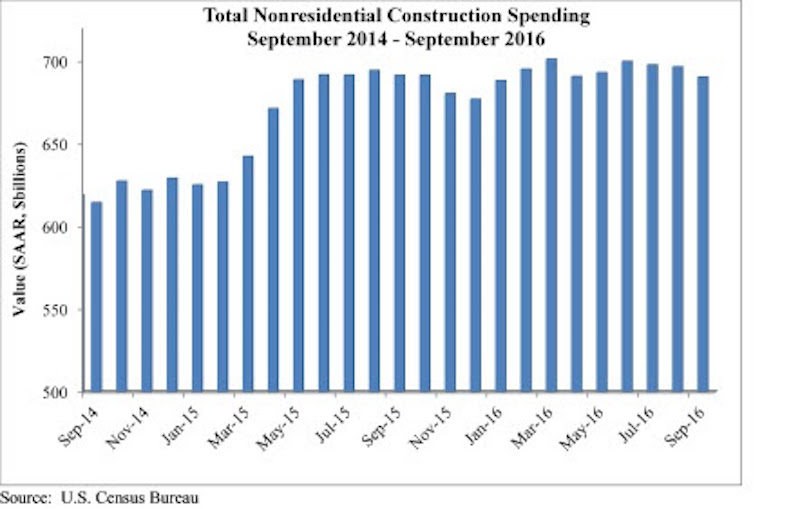In 2007, the seemingly new term Integrated Project Delivery (IPD) was making its way through the inner circles of contractors, architects and owners. IPD was developed as a method to enhance lagging efficiencies in the construction industry. During this time, it was no secret that major capital projects were a high risk endeavor, potentially wrought with problems, cost overruns, finger pointing and backstabbing. Furthermore, relationships began quickly deteriorating, problems ensued and the building owners were left holding the bag.
IPD was the method that was going to transform the construction industry into a model of efficiency and teamwork. Now, after approximately seven years, many of the “beta test” projects have been completed using the IPD Model. What have we learned? And is it truly a transformative delivery model?
Is it relational?
IPD is billed as being a relational delivery method due to the Integrated Form of Agreement (IFOA) or tri-party contract which provides financial incentive to mitigate risk. This is a true statement from a contracting stance. Many IPD contracts are developed to hold the project team members accountable when dealing with project risks.
This is helpful to the lower tiered subcontractors and consultants who, in a traditional process, would usually bear the most risk in project issues. In an IPD process, teams are incentivized by dealing with these issues quickly in order to get them completed in the most efficient and cost-effective manner. If this doesn’t happen, it will increase costs which will in turn increase risks to their own incentives and profits.
Regardless of the delivery model, it is still impossible to contract trust. What held true in a traditional project still holds true in IPD. Teams must be able to trust one another. The IPD team could possibly be the biggest factor in determining the success of a project. CBRE Healthcare has facilitated engagements where contractors, architects and owners believe they are ready for IPD only to find themselves slipping right back into traditional project delivery methods. Just saying you are using IPD does not make it true. The attitude and culture must be sincere to ensure success.
Is it collaborative?
For most project teams, collaboration is one of the biggest changes and challenges from a traditional method. Architects and planners no longer act alone in the early design process. Contractors find themselves participating in conversations from the design intent of a patient room to a clock's location on a given wall. Initially, this interaction can be awkward and tricky. Establishing a process early in the initiation phase will ensure team members are acclimated to their new roles and are confident in their participation. Architects and contractors come to rely on the new partnership that fosters accountability within the parameters that have been established.
Is it Lean?
IPD was initially born out of Lean Methodologies. The main element of Lean that applies to IPD is the elimination of waste and duplication. One objective in eliminating waste is to avoid multiple entities creating different iterations of the same drawing. Building Information Modeling (BIM) is a useful tool in achieving this goal.
Imagine for a moment the traditional design to final product process. First, a designer creates a set of drawings and specifications for a design element. Then, it’s sent to a contractor(s) and they establish a price on the design. Next, the contractor must send a set of drawings and information back to the designer (known as a submittal) to be checked for accuracy and to ensure the contractor understands the design. Rarely does the submittal process end there. For a variety of reasons, there are usually changes and redesign. This means more drawing iterations, detail changes and mistakes.
The use of BIM in construction is revolutionizing the industry and combined with IPD it drastically improves the process as the designer and contractor are in one room working on the same building element. This allows for timely modifications due to design changes/enhancements or correcting design clashes/conflicts all while never changing “hands” or being printed.
Thanks to this process, when the final design is complete, the confidence level is extremely high, leading to another revolution in the construction industry: pre-manufacturing. Many other types of Lean Methodologies are seeing enormous success within construction in general. Combining Lean Methodologies with IPD makes for an even better process.
What Have We Learned?
Having been involved in numerous IPD projects, we have found that there are many factors that can impact success. Some of the most important, whether structured through an IFOA or merely operating in a collaborative environment (IPD “lite”), are team selection, team member experience, managing team member involvement and project size.
In order to have success on any project, specifically IPD, properly implementing the launch phase is critical. Owners not aligned in their overall strategies risk potential delays and setbacks. Probably, the most important step at this phase is team selection. A well-thought-out Request for Integrated Team (RFIT) will go a long way to ensuring success.
One of the key elements of the RFIT process is allowing teams to self-select/assemble. Though this concept may seem foreign, it provides owners confidence in knowing that their selected team has a history of working together, is aligned along common goals, and has a culture conducive to collaboration. We have seen it time and again: forced marriages rarely produce desired outcomes. Therefore, it is important for the owners to abandon past practices and external influences to enable the best team to rise to the top.
It is also a good idea to have a series of planned interactions with the top candidates prior to awarding the project. This will allow the owner to determine if each team can truly deliver on their claims and work well together. For example, the top candidates can evaluate the current program elements/budget and present their findings as a part of the selection process. Don’t set up anything too specific. Challenge the teams to identify solutions and not merely react to a set of guidelines.
A legitimate concern that most have upon engaging in IPD is whether the team truly has the required knowledge base to deliver the project. It seems these days that everyone claims to have IPD experience. But just saying so doesn’t make it true.
While architects and prime contractors may be well-versed in IPD methodology, subcontractors and consultants may not have the necessary experience and could potentially be a burden to the team. Be sure to truly investigate team claims and talk to references. Specifically ask about the collaborative nature of the team and their interactions with the referring staff. The contractors with the most experience will have developed a team of subs with whom they have proven success.
Contractors have found themselves in a much expanded role due to IPD. Their involvement has greatly increased as they are now engaged at the onset of the project. While this absolutely has value to the end result, ensuring a balance in their involvement is paramount to successfully transitioning from design to construction. The contractor is a large contributor in the success of maintaining IPD through the construction phase. If their commitment fades, it will inevitably lead projects back down a traditional delivery path.
And finally, not only does IPD work on large capital projects, but it can benefit small projects as well. During the early IPD days, it was noted that the process would only work on large construction projects. This was mainly due to the insurance structure that was required. Additionally, it was thought the early investment in resources from the contractor would not be cost-effective on a small project. However, we are seeing IPD implemented on smaller projects, and it’s a real testament to the fact that early investment in planning can pay off with any project. Contractors, and more importantly subcontractors, are finding value in the fact that they no longer have to budget for potential risk.
Conclusion
Recently, CBRE Healthcare polled participants of an ongoing project to determine how many team members had actually been involved in an IPD project. Interestingly enough, three team members were not even familiar with the traditional approach as they had never worked on anything but IPD projects. The construction industry is experiencing a paradigm shift. Owners are now realizing the benefits of Lean philosophies and IPD is the approach that delivers results. As the initial IPD projects come to completion, significant success stories are being communicated.
Capital project delivery methods may still have a ways to go in achieving efficiency, but, as the industry continues to evolve, we believe IPD is a step in the right direction. Everything is changing in project delivery. Are you onboard?
Related Stories
Laboratories | May 24, 2024
The Department of Energy breaks ground on the Princeton Plasma Innovation Center
In Princeton, N.J., the U.S. Department of Energy’s Princeton Plasma Physics Laboratory (PPPL) has broken ground on the Princeton Plasma Innovation Center (PPIC), a state-of-the-art office and laboratory building. Designed and constructed by SmithGroup, the $109.7 million facility will provide space for research supporting PPPL’s expanded mission into microelectronics, quantum sensors and devices, and sustainability sciences.
MFPRO+ News | May 24, 2024
Austin, Texas, outlaws windowless bedrooms
Austin, Texas will no longer allow developers to build windowless bedrooms. For at least two decades, the city had permitted developers to build thousands of windowless bedrooms.
Resiliency | May 24, 2024
As temperatures underground rise, so do risks to commercial buildings
Heat created by underground structures is increasing the risk of damage to buildings, recent studies have found. Basements, train tunnels, sewers, and other underground systems are making the ground around them warmer, which causes soil, sand, clay and silt to shift, settle, contract, and expand.
Sports and Recreational Facilities | May 23, 2024
The Cincinnati Open will undergo a campus-wide renovation ahead of the expanded 2025 tournament
One of the longest-running tennis tournaments in the country, the Cincinnati Open will add a 2,000-seat stadium, new courts and player center, and more greenspace to create a park-like atmosphere.
Mass Timber | May 22, 2024
3 mass timber architecture innovations
As mass timber construction evolves from the first decade of projects, we're finding an increasing variety of mass timber solutions. Here are three primary examples.
MFPRO+ News | May 21, 2024
Massachusetts governor launches advocacy group to push for more housing
Massachusetts’ Gov. Maura Healey and Lt. Gov. Kim Driscoll have taken the unusual step of setting up a nonprofit to advocate for pro-housing efforts at the local level. One Commonwealth Inc., will work to provide political and financial support for local housing initiatives, a key pillar of the governor’s agenda.
Building Tech | May 21, 2024
In a world first, load-bearing concrete walls built with a 3D printer
A Germany-based construction engineering company says it has constructed the world’s first load-bearing concrete walls built with a 3D printer. Züblin built a new warehouse from a single 3D print for Strabag Baumaschinentechnik International in Stuttgart, Germany using a Putzmeister 3D printer.
MFPRO+ News | May 21, 2024
Baker Barrios Architects announces new leadership roles for multifamily, healthcare design
Baker Barrios Architects announced two new additions to its leadership: Chris Powers, RA, AIA, NCARB, EDAC, as Associate Principal and Director (Healthcare); and Mark Kluemper, AIA, NCARB, as Associate Principal and Technical Director (Multifamily).
MFPRO+ News | May 20, 2024
Florida condo market roiled by structural safety standards law
A Florida law enacted after the Surfside condo tower collapse is causing turmoil in the condominium market. The law, which requires buildings to meet certain structural safety standards, is forcing condo associations to assess hefty fees to make repairs on older properties. In some cases, the cost per unit runs into six figures.
Office Buildings | May 20, 2024
10 spaces that are no longer optional to create a great workplace
Amenities are no longer optional. The new role of the office is not only a place to get work done, but to provide a mix of work experiences for employees.

















